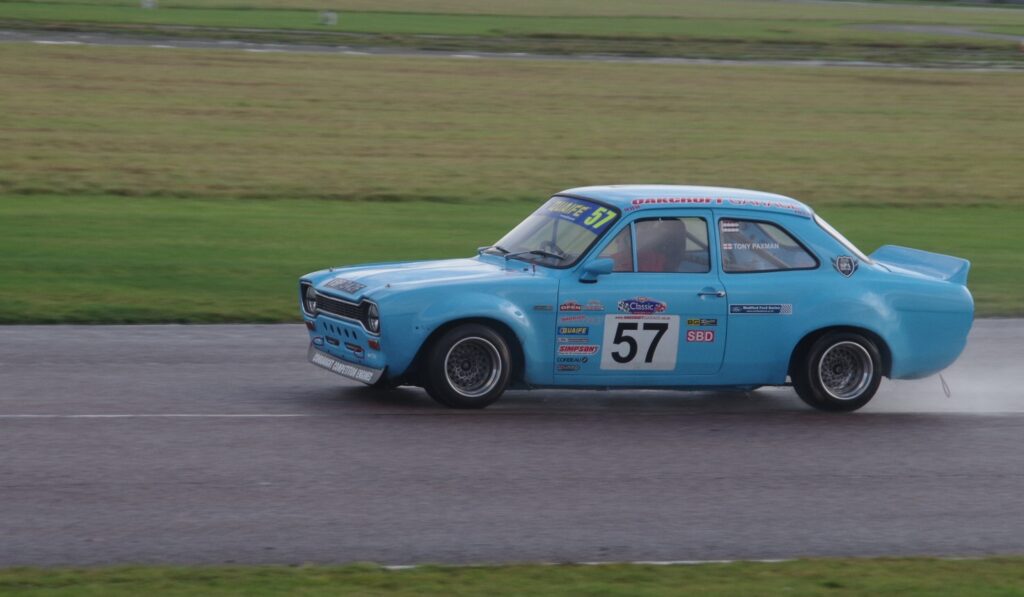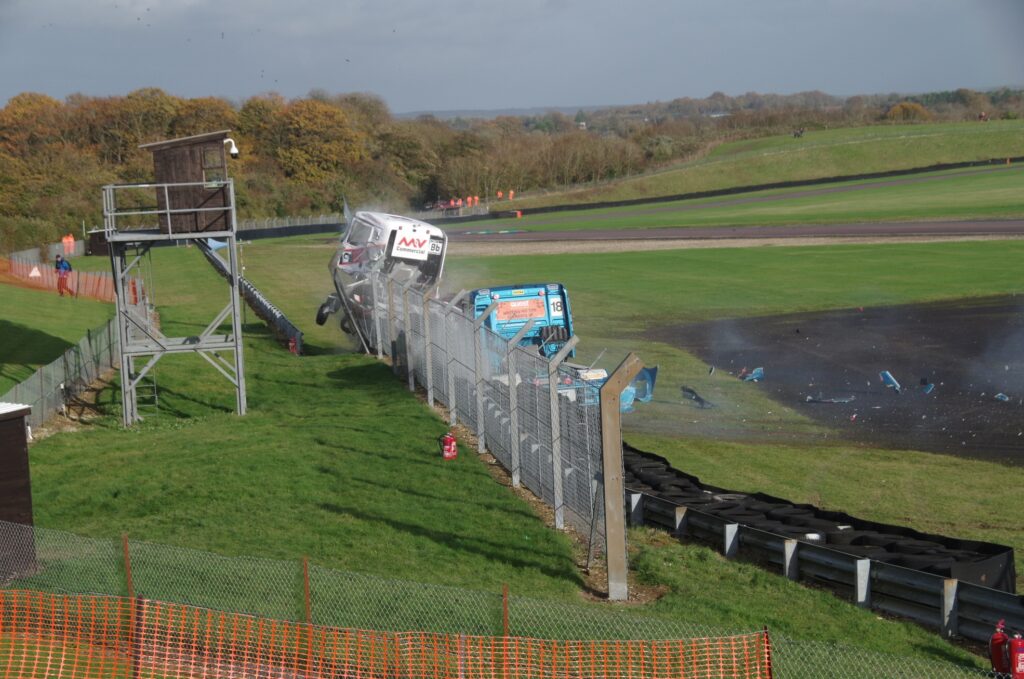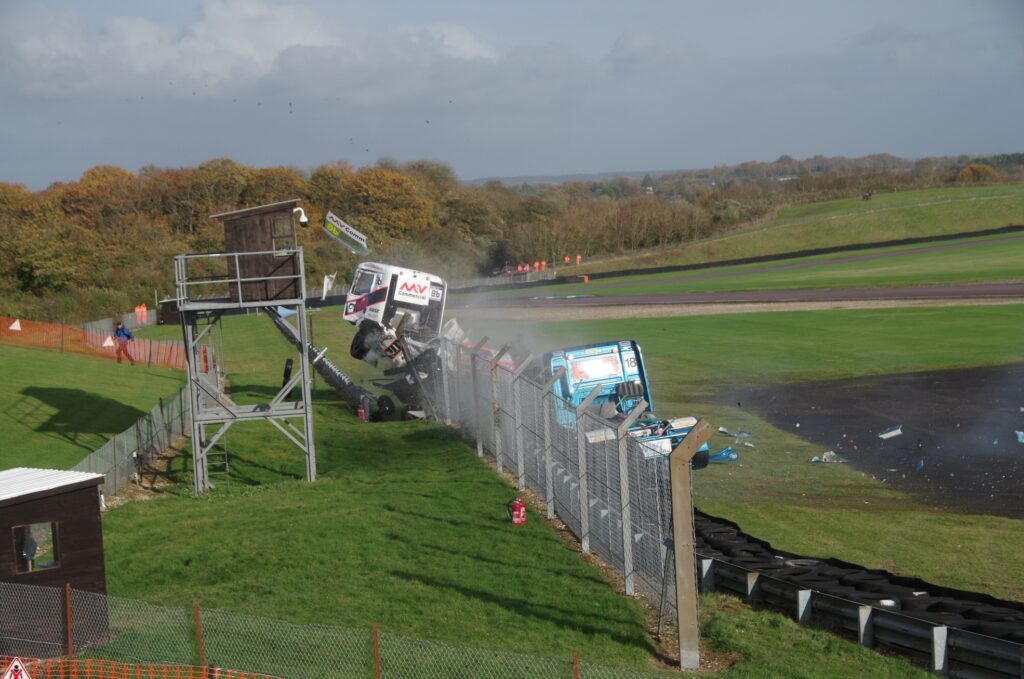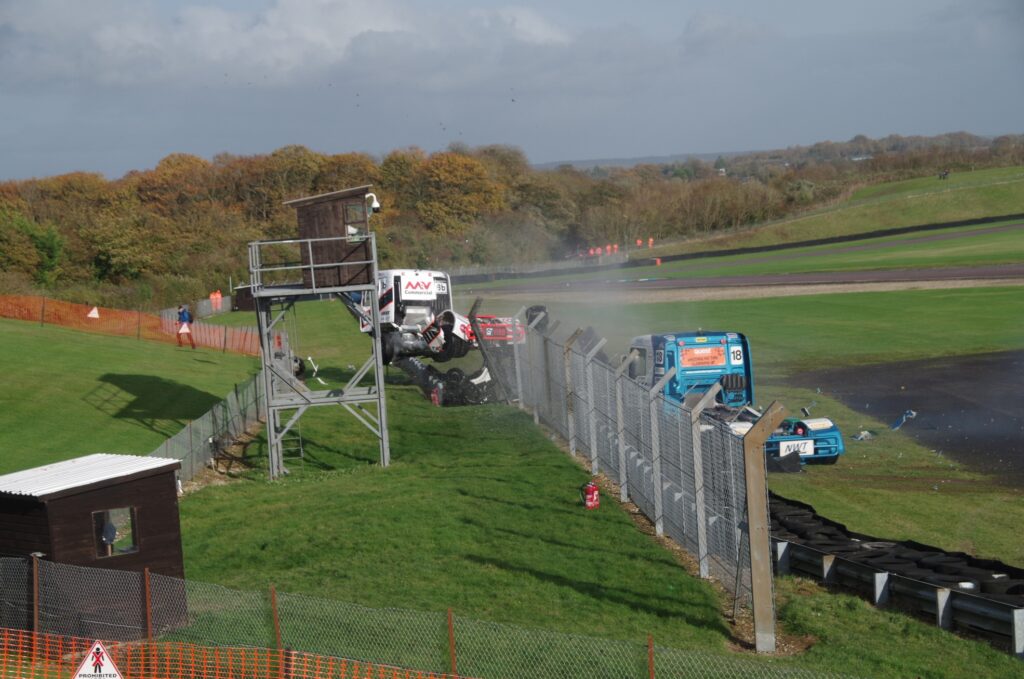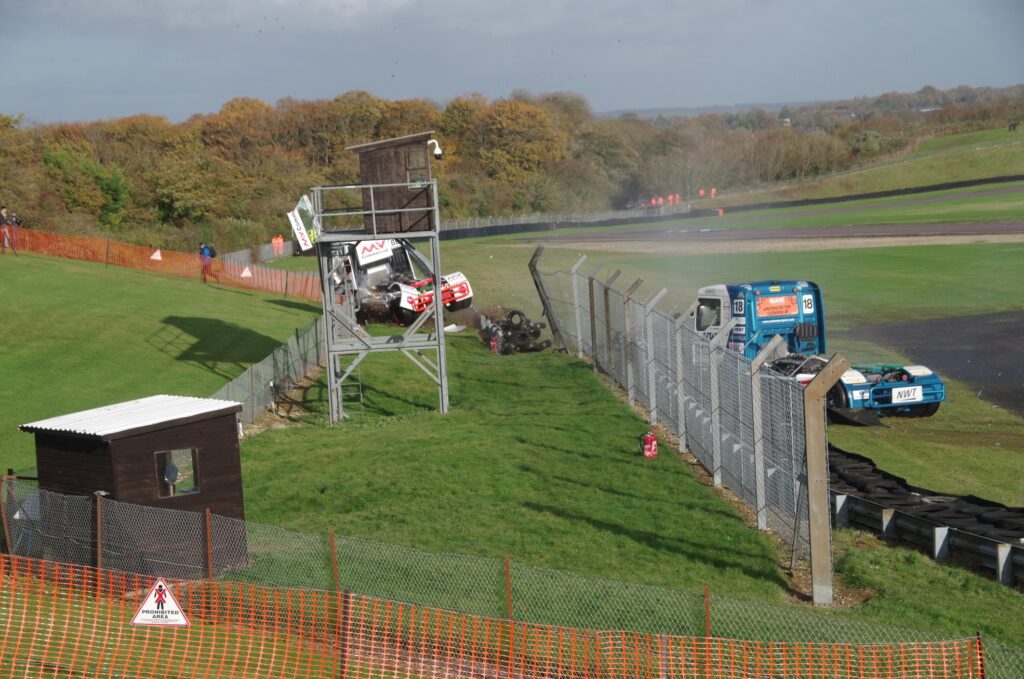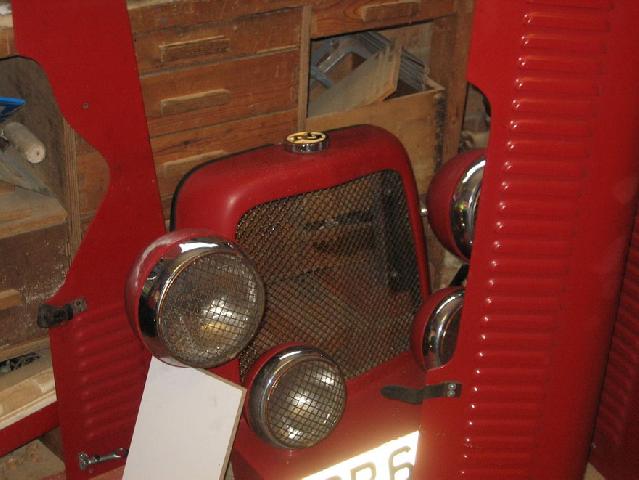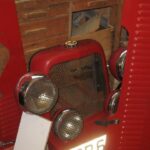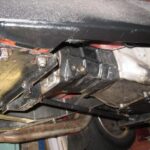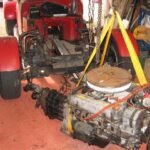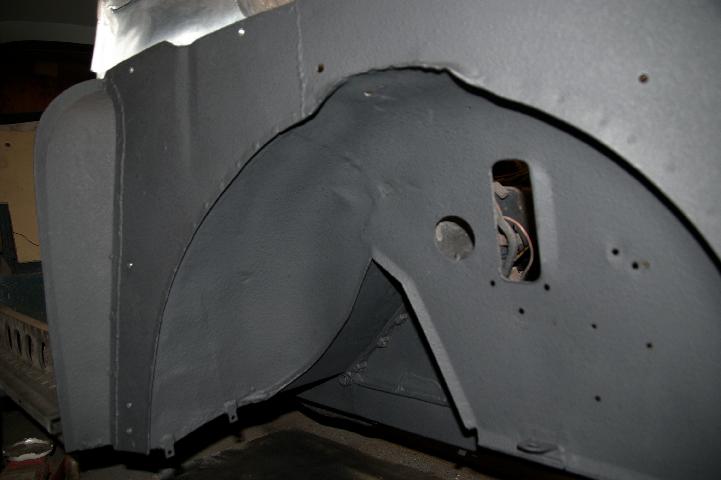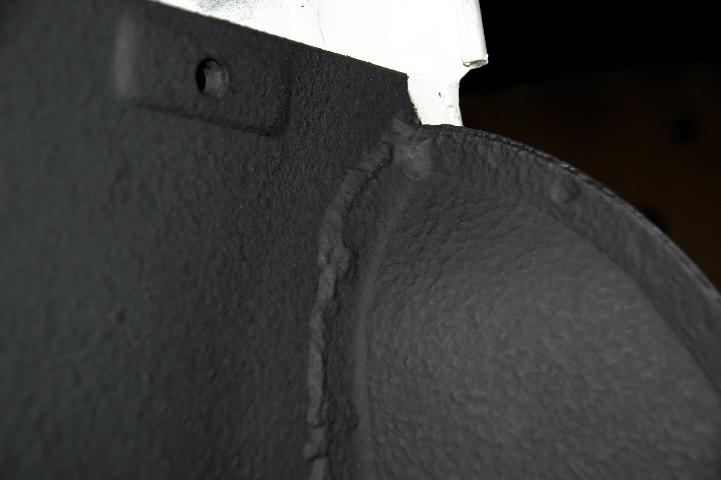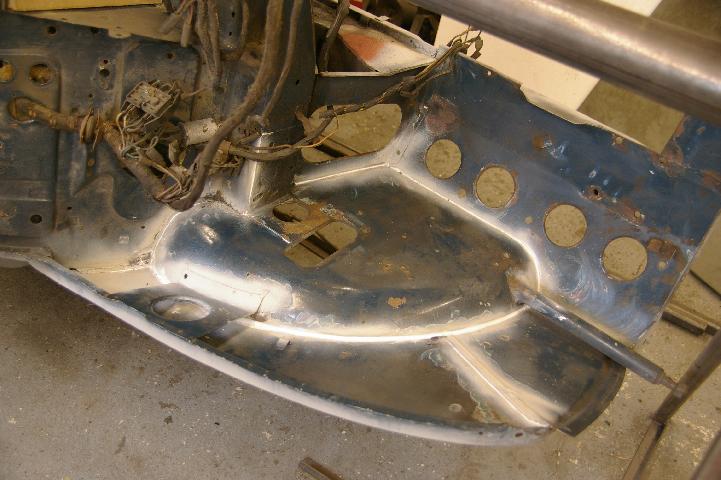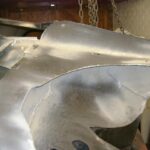Another great day at Thruxton. Some classic racing and trucks. Spectacular crash, these trucks were really flying round!
Taking the Engine out of the NG V8
OK – here is a short set of pics as I took the engine out. Probably your NG was put together differently.
The big pain is getting the radiator cowling aligned so the bonnet gaps are nice. To simplify this I have tapped some locating bolts through the cowling bracket to the radiator brackets. This is because in building the car the holes get enlarged and elongated to get the gaps right so once in place drill and tap some 4BA (showing my age there!) bolts just so the exact position can be found again.
When I built this NG (a long time ago!) I did try and make the cowling removeable as a unit with the head and spot lights, horns and wiring sub-harness that has a multi-plug. You can see this as the white bit resting on the chassis to the left of the rad.
To realign the radiator brackets I put a bit of wood across the car and some tape on the wings see pic 5. Note that my wings seem to have moved so they need tweaking later!
Not much else really just undo anything that joins to the engine. I forget the temperature sender capillary pipe and bent it a bit, it then broke off. Also when removing it from the manifold it broke in half and the end bit was left in the manifold. A bit of careful wiggling got it out without loosing it inside.
I’d recommend not leaving that bit connected as a recon gauge is about 60 pounds.
Engine bay strip and spray
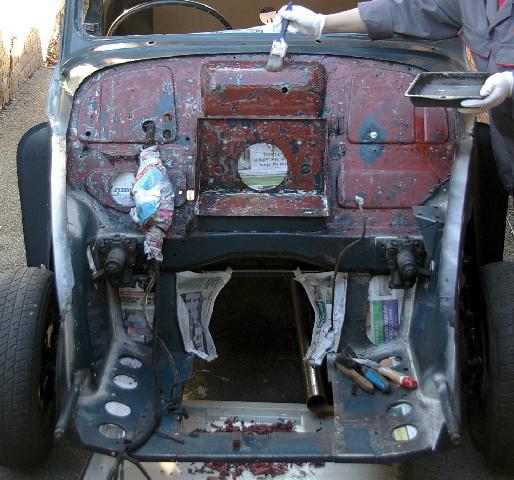
Paint stripping started, unfortunately not far enough due to bad weather and the delays caused by disc brake conversion problems. Lots of hard work stripping the paint but finally got to the metal.
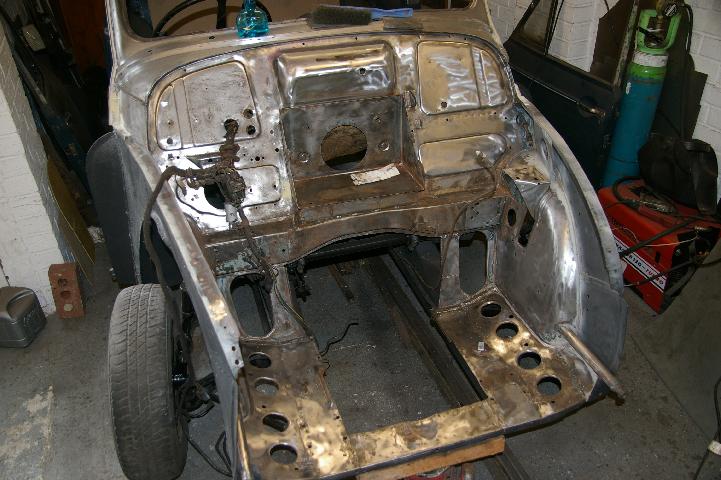
The rust was tackled with the wire cup brush on the angle grinder and the metal scuffed up with a surface prep disc on the angle grinder. This disc is a kind of hard scourer thing which gets off any odd stuff and sands the surface to about P180. I then went over the metal with P320. Although where the wire cup brush had scratched the surface I had to use P120 first. Avoid the cup brush on good metal as it does more damage than good.
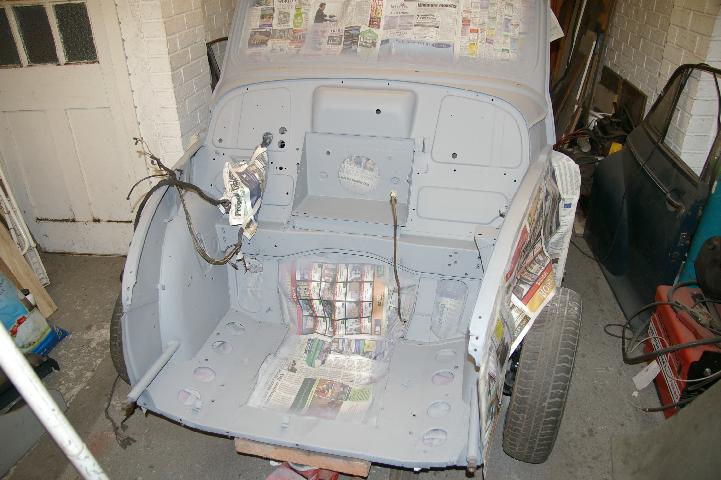
The zinc primer didn’t spray out my old gun, I guess because it was not thinned out as much as normal. The old gun has no pattern adjust. The new DeVilbiss sprayed it fairly well but caused a lot of atomisation and mist even with the pressure down and the needle out to max (to the point where the knob fell off!
Next seam seal and touch in a few bits that were difficult to reach with such a large gun.
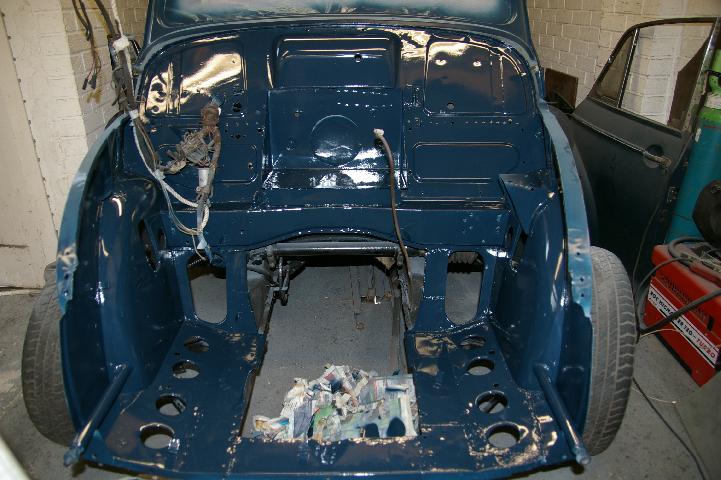
Engine bay painted with top coat. I have put on what I think is the minimum of 4 coats (although some is thinner). The final finish is ok with a little orange peel in some areas that are difficult to cover without over spraying. The minimum of cutting back would give a good finish but I probably won’t do that for now.
Amazing how those elusive dents seem to jump out once there is a shiny finish on it. However once the Engine bay is filled with engine bits and dirt then paint and other faults will go un-noticed and we will think “was it worth the effort?”!!
Touchdown

After a bit of a delay while I sorted out the front disc brake Marina hub conversion (see this article on the whole experience) I now have wheels on each corner.
The Mog is now off the roasting spit and on it wheels.
Morris to Marina disc conversion
The Morris I bought for parts for this project had a tuned 1275 engine and disc brakes. I assumed the previous owner had down the work and I only had to use the bits. Unfortunately, the person had just put the Marina hub with Marina bearings onto the Minor axle. Then tightened the nut to prevent the loose fitting bearings wobbling.
So what I was expecting to be a hub conversion was nothing more than a bodge. Consequently I had to get the conversion, which proved not much better that the solution without it.
The whole experience is described here .
Suspension
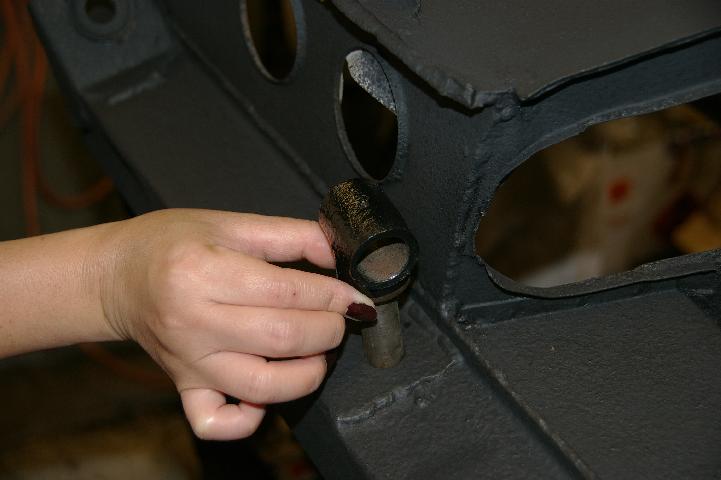
Picture of the first bit going back on the car (not my hand!). It’s the eye bolt – below fitted with poly bushes.
Now in the stage of cleaning of some remaining suspension bits. I had not previously done the dampers as I was going to use the telescopic shocks that I had. I may still do that on the rear if we keep the car, current talk of changing it for a traveller.

I want to get it on the wheels, hence get the suspension back so I can strip the paint. Undecided whether to just strip everything or do the front first followed by the rear. Garage is to small to get round the whole car for spraying.
Note to self: get a bigger garage – a single one is hard work.
Getting round to adding more bits to the Mog. Here is the front offside suspension (less hub – see elsewhere for details).
I put back the steering rack, master cylinder, fuel and brake pipe that run underneath.
Not sure if I got the ride height correct but it is close to what it was before so should only need fine adjustment with the rear adjuster plate.
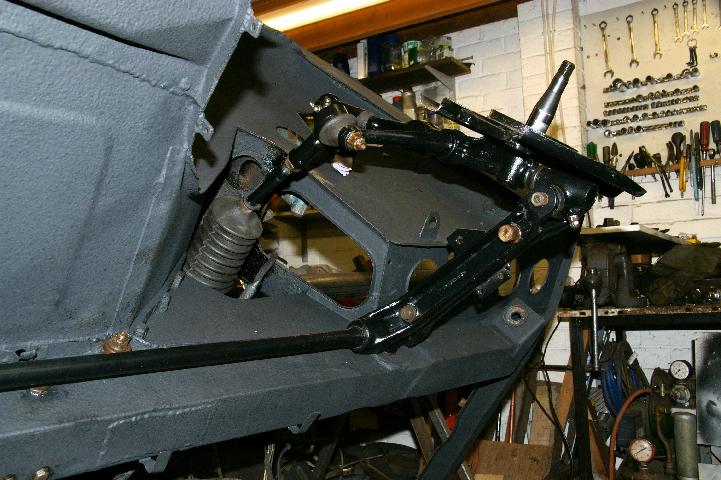
The poly bushes for the eye bolt went in ok – although they still get squashed a lot so I added a washer between the arms (you can just see it in the picture).
When fitting the bushes it is easy to get the front one squashed to much. This is because the rear arm slides down the splines and so to bring the arms together the front one squashes.
Normal advice is to remove the tension on the arms, however this doesn’t really work that well as the arm often will not slide on the splines (even a nice clean one like this didn’t). My advice is to help it slide forward using a block of wood and hammer.
Other advice is to tighten it down when the suspension is under load to stop the rubber bushes tearing. This helps for rubber bushes but is not required here (hopefully) as the poly bushes can be greased so the pin will slip round freely.
Gravitex finish – the verdict
I used a Schwartz type underseal gun to apply the Gravitex. Gravitex is made by U-Pol and seems to be hard to find but I got mine on line from Auto Paint and Panel.
The Gravitex is cellulose based and dries very fast. To get an original looking finish I set my gun to about 60psi and tried to get a thick coating on in not to many sweeps of the gun. Overspray gives a sandpaper finish but luckily due to its consistency you don’t get much.
It covers over the original stonechip finish but I tried to cover some old oil based underseal which although it seemed ok in my tests didn’t quite work. I think was due to the thickness I applied, some thinner coatings applied a few times would cover it but wasn’t that great – better to remove all traces of oil based underseal.
I also found that the seam sealer would have been best primed before applying the Gravitex as it lifted off in one or two of the corners.
I bought some more Gravitex so that I can complete the fixes. I used 4ltrs of the stuff to cover the sills and wheel arches. I didn’t cover the center from the cross member backwards (basically the propshaft area). I guess that would take another 1ltr.
So, some areas to fix due to inexperience but generally this is looking like good stuff. As an update I cleaned off the area that had the underseal and resprayed the Gravitex but the new bottles were thinner and gave a smooth finish. Sod’s law isn’t it – when you want orange peal finish you can’t get it!
So just in case you’re trying to do a similar thing then 6ltrs should give a good coating over the underside and inner wing wheel arches (as in the picture, not inside the outer wing). Also, for good adhesion you need to give the metal a good key, I used one of those surface prep (0.5″ hard pot scourer type thing) disks for the angle grinder – however I didn’t do all the surface; bit of a rush to get the stuff on and I forgot 🙁
Oh, and for the record this is the black colour, the pictures are taken with flash so its looks a bit light.
Primed and sealed
Following all the underside welding, I cleaned off the welds and any surface rust, wiped down with some de-greaser and primed the bare areas using etch primer from a can.
The seams were then seam sealed and a few little surface areas filled with body filler.
I decided to clean off the seams in the engine bay because I wanted to underseal the bottom of the car whilst it was on the ‘roasting spit’. However, I also wanted to paint strip the old paint in the engine bay as previous resprays had left a thick amount of paint that would not be a good base for yet another respray. The problem here is that the paint stripper has to be washed off and thus the car out of the garage. So the only way to prevent paint stripper and water going down the seams was to clean and prepare them now.
I’m finally getting to the part where things start taking shape. The cleaning off, welding and making panels seemed to be never ending.
